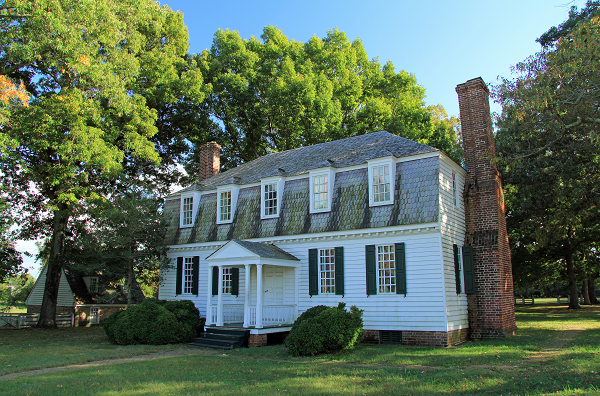
The first historic structure report prepared in the United States was written for the Moore House, the site of the surrender of the British troops at Yorktown in 1781.
By Deborah Slaton
The AIA Historic Resources Committee is sponsoring a colloquium on Historic Structure Reports at Taliesin West in Scottsdale, Arizona, on February 8 and 9, 2019. The colloquium will explore the origins and evolution of historic structure reports, review examples of their preparation and applications, consider innovative techniques used in of HSRs, and examine how HSRs are used and implemented. will be illustrated by case studies of a range of significant historic resources, as well as the preservation plan for Taliesin West.
The first historic structure report prepared in the United States was written for the Moore House, the site of the surrender of the British troops at Yorktown in 1781, at the end of the Revolutionary War. Authored by National Park Service architect Charles E. Peterson in the early 1930s, the report was the first in a series of such studies that now numbers in the thousands.
A historic structure report is typically commissioned by the property owner—whether individual, institution, or governmental agency—for a building or structure that has been determined to be historically or architecturally significant. An HSR combines the results of historical research and field investigations to guide the decision-making process for a historic structure. The report also documents and addresses management goals for the property and provides recommendations for preservation, rehabilitation, or restoration, as well as repair and maintenance, and serves as a basis for of treatment documents.
In 2005, the National Park Service issued Preservation Brief 43 on the Preparation and Use of Historic Structure Reports, to establish for owners commissioning HSRs and the architects, engineers, historians, conservators, and others developing these studies. Over the past several decades, historic structure reports have been prepared for a wide range of buildings and structures, including both individual properties and collections of resources. The scope of work for the HSR and the final work product vary depending on the nature and significance of the structure, issues conditions of concern, and in some cases budgetary restrictions—however, the essential historic preservation goal is the same.
HSRs continue to evolve to encompass an ever-widening collection of historic properties, and as the technologies available to conduct assessments, document resources conditions, and provide treatment also continue to expand. The colloquium will provide an opportunity to discuss the future of HSRs—how they may continue to evolve to be more useful, user-friendly, and helpful in planning for the stewardship of our nation’s historic resources.